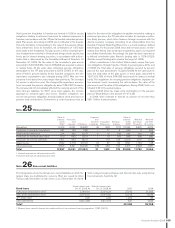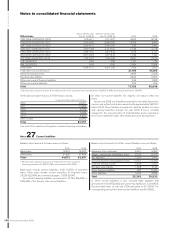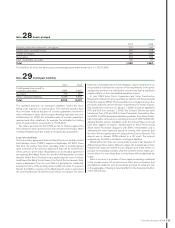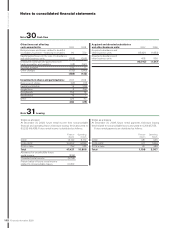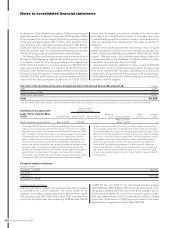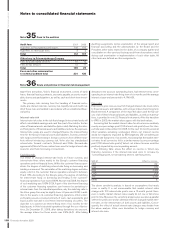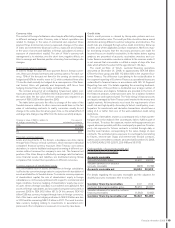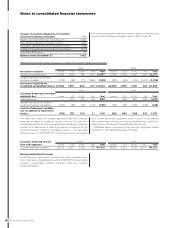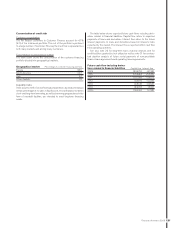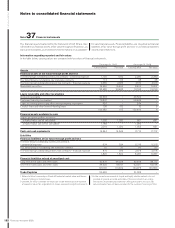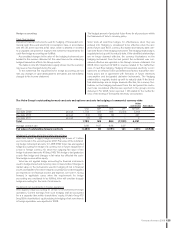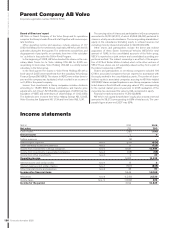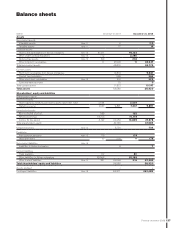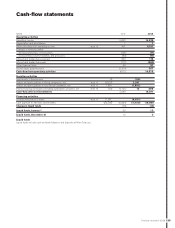Volvo 2008 Annual Report Download - page 123
Download and view the complete annual report
Please find page 123 of the 2008 Volvo annual report below. You can navigate through the pages in the report by either clicking on the pages listed below, or by using the keyword search tool below to find specific information within the annual report.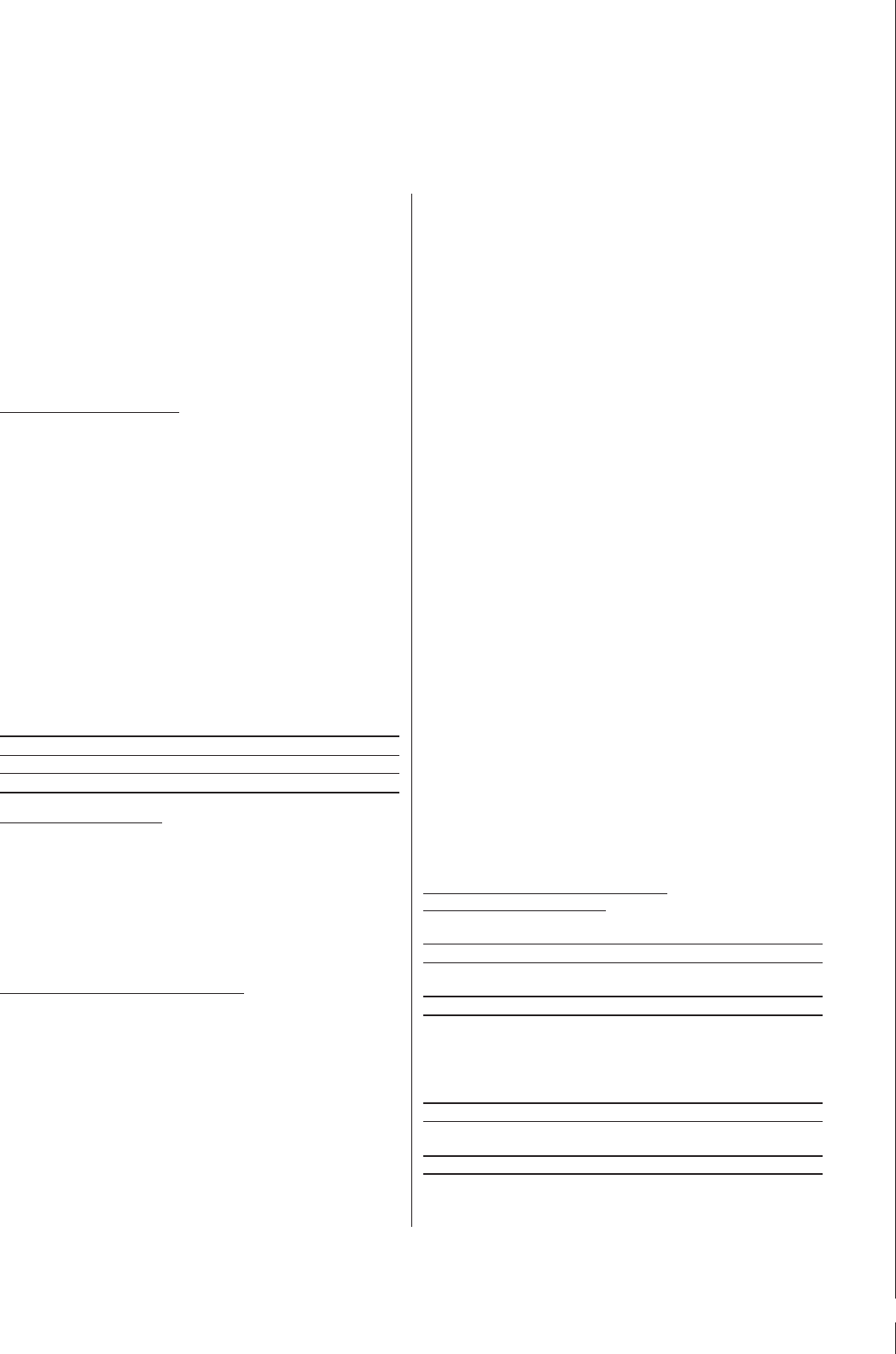
119
Financial information 2008
Currency risks
The content of the reported balance sheet may be affected by changes
in different exchange rates. Currency risks in Volvo’s operations are
related to changes in the value of contracted and expected future
payment fl ows (commercial currency exposure), changes in the value
of loans and investments (fi nancial currency exposure) and changes
in the value of assets and liabilities in foreign subsidiaries (currency
exposure of shareholders’ equity). The aim of Volvo’s currency-risk
management is to minimize, over the short term, negative effects on
Volvo’s earnings and fi nancial position stemming from exchange-rate
changes.
Commercial currency exposure
In order to hedge the value of future payment fl ows in foreign curren-
cies, Volvo uses forward contracts and currency options. For each cur-
rency, 75% of the forecast net fl ows for the coming six months are
hedged and 50% for months seven to 12, while contracted fl ows after
12 months shall normally be hedged. As a consequence of the fi nan-
cial turmoil, Volvo will gradually and temporarily shift focus from
hedging forecast fl ows to only hedge contracted fl ows.
The nominal amount of all outstanding forward and option con-
tracts amounted to SEK 73.8 billion (63.1) at December 31, 2008. On
the same date, the fair value of these contracts was negative in an
amount of SEK 2,936 million (positive 266).
The table below presents the effect a change of the value of the
Swedish krona in relation to other currencies would have on the fair
value of outstanding contracts. In reality, currencies usually do not
change in the same direction at any given time, so the actual effect of
exchange-rate changes may differ from the below sensitivity analysis.
Change in value of SEK in relation to
all foreign currencies, %
Fair value of
outstanding contracts
(10) (6,245)
0 (2,936)
10 373
Financial currency exposure
Loans and investments in the Group’s subsidiaries are done mainly
through Volvo Treasury in local currencies, which minimizes individual
companies’ fi nancial currency exposure. Volvo Treasury uses various
derivatives, in order to facilitate lending and borrowing in different cur-
rencies without increase the company’s own risk. The fi nancial net
position of the Volvo Group is affected by exchange rate fl uctuations,
since fi nancial assets and liabilities are distributed among Group
companies that conduct their operations in different currencies.
Currency exposure of shareholders’ equity
The consolidated value of assets and liabilities in foreign subsidiaries
is affected by current exchange rates in conjunction with translation of
assets and liabilities to Swedish kronor. To minimize currency ex posure
of shareholders’ capital, the size of shareholders’ equity in foreign
subsidiaries is continuously optimized with respect to commercial and
legal conditions. Currency hedging of shareholders’ equity may occur
in cases where a foreign subsidiary is considered overcapitalized. Net
assets in foreign subsidiaries and associated companies amounted at
year-end 2008 to SEK 66.0 billion (61.1). Of this amount, SEK 4.3
billion (3.8) was currency-hedged through loans in foreign currencies.
Out of the loans used as hedging instruments SEK 3.3 billion are due
in 2010 and the remaining SEK 1.0 billion in 2011. The need to under-
take currency hedging relating to investments in associated com-
panies and other companies is assessed on a case-by-case basis.
Credit risks
Volvo’s credit provision is steered by Group-wide policies and cus-
tomer-classifi cation rules. The credit portfolio should contain a sound
distribution among different customer categories and industries. The
credit risks are managed through active credit monitoring, follow-up
routines and, where applicable, product reclamation. Moreover, regu-
lar monitoring ensures that the necessary provisions are made for
incurred losses on doubtful receivables. In the tables below, ageing
analyses are presented of accounts receivables overdues and cus-
tomer fi nance receivables overdue in relation to the reserves made. It
is not unusual that a receivable is settled a couple of days after due
date, which affects the extent of the age interval 1–30 days.
The credit portfolio of Volvo’s customer-fi nancing operations
amounted at December 31, 2008, to approximately SEK 98 billion
(79) in the Volvo group and SEK 112 billion (91) in the segment Cus-
tomer Finance. The difference is pertaining to the reclassifi cation in
the segment reporting of Customer Finance as operational leases are
reclassifi ed to fi nancial leases in accordance with IAS 14 Segment
Reporting. See note 1 for details regarding the accounting treatment.
The credit risk of this portfolio is distributed over a large number of
retail customers and dealers. Collaterals are provided in the form of
the fi nanced products. Credit provision aims for a balance between
risk exposure and expected yield. The Volvo Group’s fi nancial assets
are largely managed by Volvo Treasury and invested in the money and
capital markets. All investments must meet the requirements of low
credit risk and high liquidity. According to Volvo’s credit policy, coun-
terparties for investments and derivative transactions should have a
rating of A or better from one of the well-established credit rating
institutions.
The use of derivatives involves a counterparty risk, in that a poten-
tial gain will not be realized if the counterparty fails to fulfi ll its part of
the contract. To reduce the exposure, master netting agreements are
signed, wherever possible, with the counterparty in question. Counter-
party risk exposure for futures contracts is limited through daily or
monthly cash transfers corresponding to the value change of open
contracts. The estimated gross exposure to counterparty risk relating
to futures, interest-rate swaps and interest-rate forward contracts,
options and commodities contracts amounted at December 31, 2008,
to 3,798 (3,424), 2,763 (2,527), 229 (48) and 38 (113).
Credit portfolio – Accounts receivable and
Customer fi nancing receivables
Accounts receivable 2007 2008
Accounts receivable gross 31,427 32,272
Valuation allowance for doubtful
accounts receivable (923) (1,749)
Accounts receivable net 30,504 30,523
For details regarding the accounts receivable and the valuation for
doubtful accounts receivable, refer to note 20.
Customer fi nancing receivables 2007 2008
Customer fi nancing receivables gross 80,210 99,931
Valuation allowance for doubtful customer
fi nancing receivables (1,363) (1,442)
Customer fi nancing receivables net 78,847 98,489


